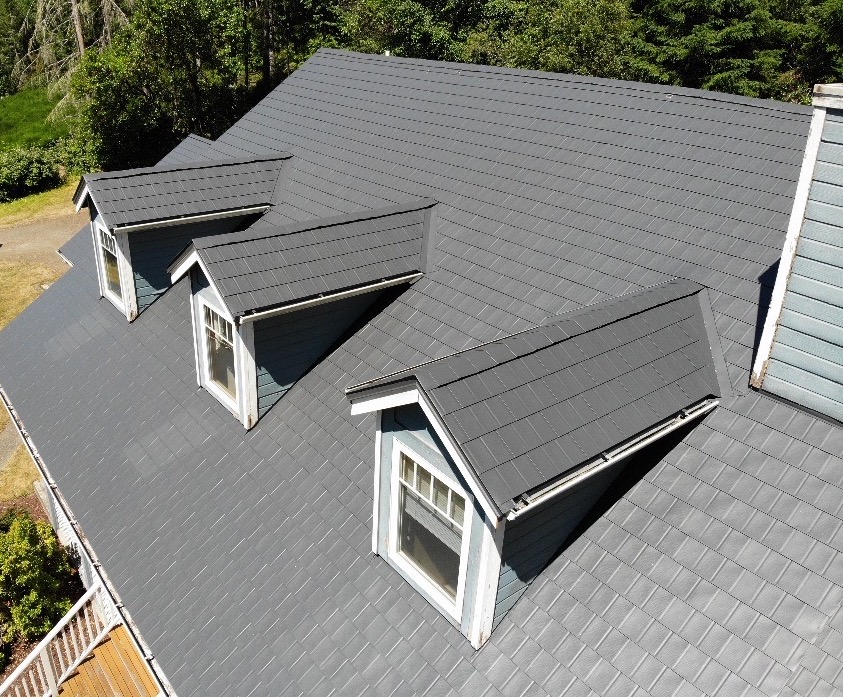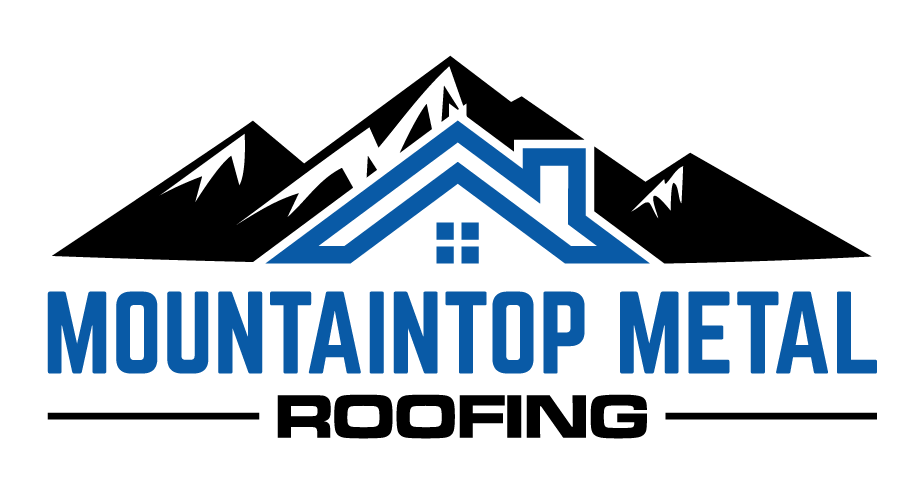If you’re considering upgrading your home with a durable and stylish roofing solution, you’ve come to the right place. In this blog post, we’ll explore different types of metal roofs for residential homes, from standing seam metal roofing to metal shingles, and discuss the pros and cons of each.
Whether you’re seeking the sleek sophistication of standing seam metal roofing or the timeless charm of copper shingles, Mountaintop Metal Roofing helps you make an informed decision for your home. From new construction to roof replacements, we have the metal roofing solution for you and your home.
Types of Metal Roofs for Homes: The Diversity of Metal Roofing Options
Metal roofs come in a variety of styles and materials, each offering unique benefits and aesthetic appeal. Let’s delve into the different types of metal roofs available for residential homes and their distinguishing features.
- Standing Seam Metal Roofing
- Metal Shingles
- Metal Cedar Shake Shingles
- Corrugated Metal Roofing
- Copper Roofing
Standing Seam Metal Roofing
Standing seam roofs are a popular choice for homeowners seeking a modern and durable roofing solution. This style features vertical panels with raised seams that interlock to create a watertight seal, offering superior protection against the elements.
Pros:
- Exceptional durability and weather resistance
- Standing seam panels have a sleek and modern appearance
- Concealed fasteners for a clean aesthetic
Cons:
- Higher upfront cost compared to other roofing materials
- Complex installation process may require professional expertise

Metal Shingles
Metal shingles mimic the appearance of traditional asphalt shingles but offer the durability and longevity of metal roofing. They come in various styles and colors, providing homeowners with flexibility in design and curb appeal.
Pros:
- Mimics the look of traditional asphalt shingles
- Durable and low-maintenance
- A wide range of styles and colors are available
Cons:
- Can be susceptible to dents and damage from hail or falling objects
- Higher upfront cost compared to asphalt shingles
Metal Cedar Shake Shingles
Metal cedar shake shingles replicate the rustic charm of natural cedar shakes while offering the added benefits of metal roofing, including durability and low maintenance. They are available in a range of colors and profiles to suit different architectural styles.
Pros:
- The rustic charm of natural cedar shakes
- Durable and low-maintenance
- Resistant to rot, insects, and fire
Cons:
- Higher upfront cost compared to traditional cedar shakes
- Installation may require professional expertise due to the unique shape and design
Corrugated Metal Roofing
Corrugated metal roofing is characterized by its distinctive wavy pattern and is often used for agricultural and industrial buildings. However, modern corrugated metal roofing options offer a sleek and contemporary look for residential homes.
Pros:
- Unique and contemporary appearance
- Lightweight and easy to install
- Cost-effective option for residential homes
Cons:
- Exposed fasteners may be prone to leaks over time
- Limited design options compared to other metal roofing styles
Copper Roofing Shingles
Copper roofing exudes elegance and sophistication, with its distinctive patina evolving over time to enhance the beauty of any home. While copper roofs are the most expensive option upfront, their longevity and aesthetic appeal make them a worthwhile investment for discerning homeowners.
Pros:
- Timeless elegance and beauty
- Longevity and resistance to corrosion
- Unique patina develops over time
Cons:
- Highest upfront cost compared to other metal roofing materials
- May be harder to find if replacements are needed
 Metal Roofing Materials
Metal Roofing Materials
In addition to different styles of metal roofs, there are a few different metal roofing materials. Galvanized steel roofs are affordable and readily available which make them easy to replace if needed. Like all metal roofing, it is durable and resistant to corrosion and can come in a variety of profiles and colors. If not properly coated, however, they can rust over time.
A popular option of late is aluminum roofing. It is a much more lightweight type of roof than steel but can still stand up to the elements just as well. It isn’t as susceptible to rust, which makes it ideal for coastal areas and regions with high humidity. It is a very low-maintenance option and lasts for 50 years and oftentimes much longer.
The unmatched beauty and longevity of copper roofing can’t be overstated as the unique patina that forms over the years can’t be replicated. It’s highly resistant to corrosion and fire (like other metal roofing). But it also has the highest upfront cost among metal roofing materials and needs specialized installation expertise.
Zinc roofs aren’t as common as the other materials, and because of that may be costlier than other metal roofing materials. But they are environmentally friendly and recyclable, very flexible and resistant to corrosion, and have a long lifespan with minimal maintenance needed.
Frequently Asked Questions:
Are metal roofs noisy during rainstorms?
Modern metal roofing systems are designed with insulation materials to minimize noise from rain or hail, making them no louder than traditional roofing materials.
Can I install solar panels on a metal roof?
Yes, metal roofs provide an excellent platform for installing solar panels. Their durability and smooth surface make them ideal for supporting solar energy systems.
Do metal roofs attract lightning?
Contrary to popular belief, metal roofs do not attract lightning strikes. They can help spread the energy from a lightning strike, reducing the risk of fire damage to your home.
How long does a metal roof last compared to other roofing materials?
Metal roofs typically last 50 years or more with minimal maintenance, outlasting traditional roofing materials like asphalt shingles, which may need replacement every 20-30 years. Slate and clay tile roofing are much more likely to crack (and are more expensive as well).
Are metal roofs energy-efficient?
Yes, metal roofs are highly energy-efficient, reflecting sunlight to keep homes cooler in the summer and reducing the need for air conditioning, which can lower energy bills and reduce carbon emissions.

